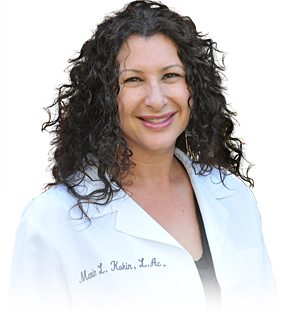Temporomandibular Joint Disorders (TMJ) Acupuncture and Myofascial Techniques
Temporomandibular joint disorders (TMJ) diagnosis represents a group of often painful and/or dysfunctional conditions involving the muscles of mastication and/or the temporomandibular joint. The main signs and symptoms include TMJ clicking, acute or chronic myofascial or oral masticatory muscle pain, tenderness of the masticatory muscles, and abnormal jaw movements.
Contributing factors to this syndrome may include: joint abnormalities, stress, orthodontic treatment, microtrauma, poor health and nutrition, joint laxity, and hormone imbalance.
Various treatments have been implemented for the treatment of TMJ, including pharmacological therapy, psychological therapy, occlusal therapy, physical therapy, cognitive therapy, acupuncture therapy, and surgical interventions. In cases of myofascial pain, strategies often target muscle relaxation. Acupuncture is a commonly used strategy for pain relief in these cases, in which an acupuncture needle or, more often, multiple needles are inserted at the appropriate acupuncture points, specifically into the TMJ joint and local muscle tissue that is affected. In some cases, electroacupuncture is utilized in the treatment plan.
Acupuncture is an effective tool for the management of pain in patients with TMJ disorders. In traditional Chinese medicine (TCM), the human body contains a form of energy (qi) that flows throughout the body along clearly defined channels (meridians). When this sophisticated interconnected inner system is unbalanced, pain and disease will result. However, by inserting appropriate needles into specific points, the channels can be blocked, and the qi can once again flow fluently, and the rebalancing of the energy flow will both relieve the pain and eliminate the disease/disorder. From the perspective of Western medicine, acupuncture can reduce the release of endogenous opiates from the pituitary gland into the plasma, thereby resulting in analgesia in the central nervous system, giving local pain relief in the inflamed tissue, as well as overall inflammation.
Keep in mind that acupuncture for TMJ is a full body treatment, which incorporates stress reduction acupuncture and deep relaxation points for more sustained and beneficial relief!
MYOFACIAL/MASSAGE/ACUPRESSURE TECHNIQUE FOR TMJ DISORDERS:
- An interview is conducted by the therapist to get the patient’s condition history. A visual examination follows next to assess the patient’s postural structure and alignment.
- Gentle basic myofascial techniques are then applied to help the patient relax in the affected areas. Areas of the neck (the SCM and Platysma, Levator Scapula, Scalenes and Trapezius), spine and lower back, are commonly included to accomplish a feeling of general relaxation, before engaging in the actual TMJ procedure.
- TMJ Procedure: TMJ technique is an Intra-Oral procedure. Sterile gloves are used for the protection of both the patient and the therapist. It is necessary to enter the oral cavity, to reach some of the affected tissues. This includes the Pterygoids, both medial and lateral.
The Medial Pterygoid is the deepest, and can only be accessed by Intra-Oral techniques. The Lateral Pterygoid is accessible externally, but only partially, as it too is deep, and covered by other tissues of the jaw (The Masseter and part of the Temporalis).
- Soothing gentle exercises, assisted by the therapist, to aid in alleviating the TMJ pain concludes the session. These may include Rotational and Compression techniques that are specifically designed to reach the innermost elastic tissues of the Temporomandibular Joint in the most natural, gentle, and non-intrusive manner.

Meet Marin L. Kokin, L.Ac.
Marin — acupuncturist, nutritionist, and owner of the Kokin Healing Center — is beloved by her patients. Read about patients that have found success at the Kokin Healing Center in Calabasas.
